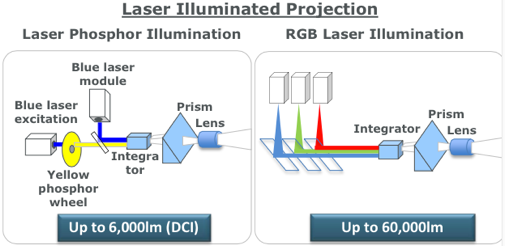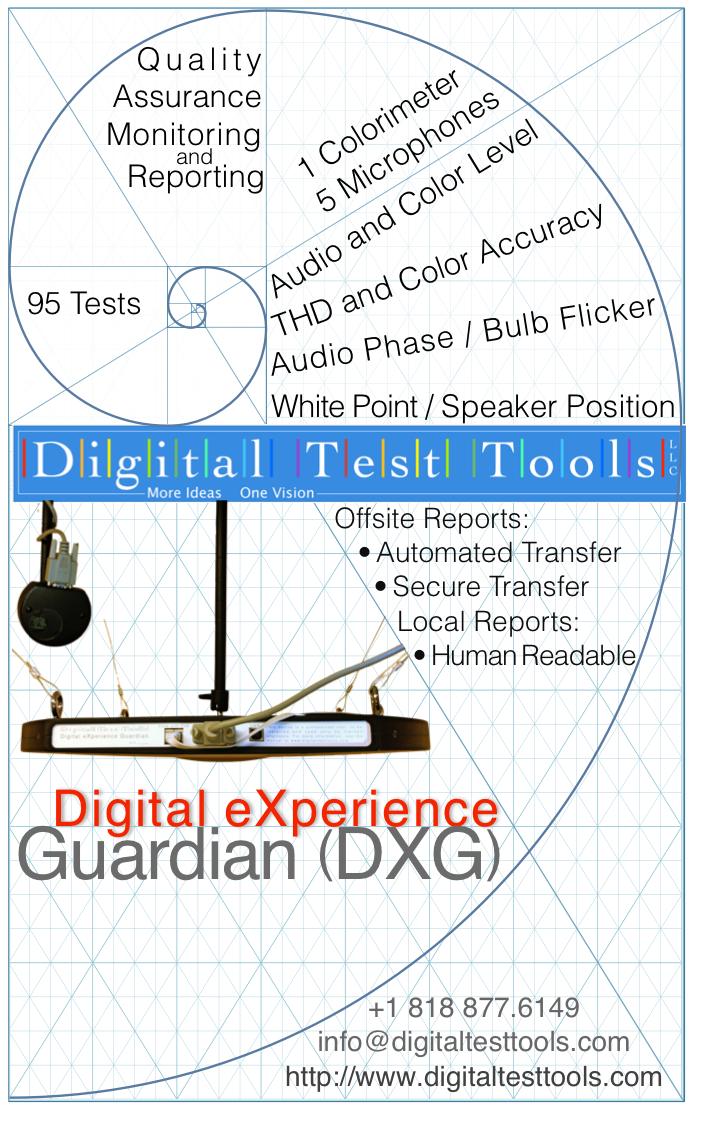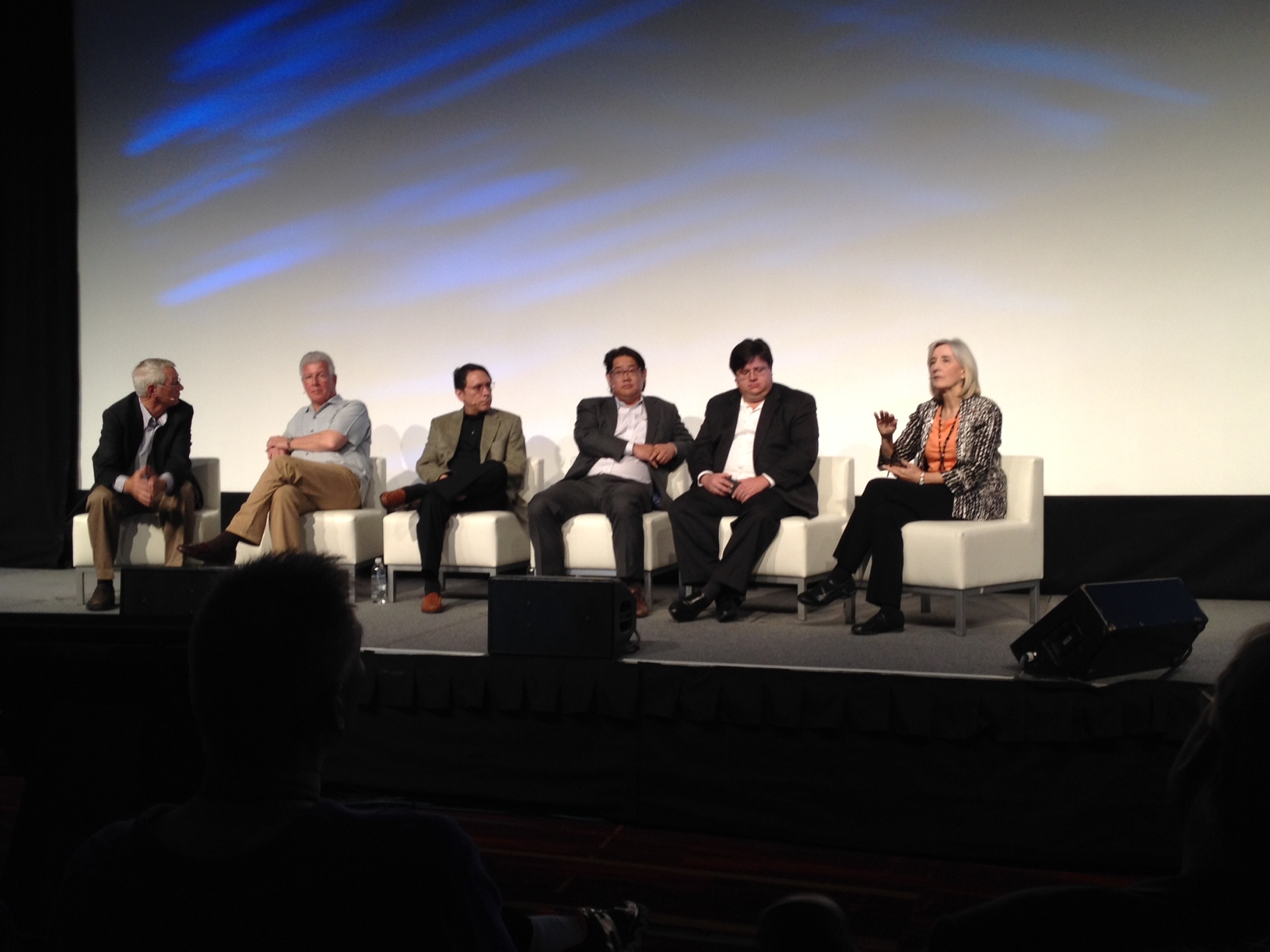Harkness Screens is offering their new iPhone Luminance meter – Oops! Digital Screen Verifier app – at a 25% discount this week – until 28 June. This is another tool that brings expertise to the “your own staff”, but it also brings the data into the Harkness database tool, which management or a service provider can use externally to make certain that the projector/screen interface is working well.
USL has announced that their model two version of the LSS-100, as the LSS-100P, incorporating new features, in some cases surpassing and some cases keeping up with the Digital Test Tools Digital eXperience Guardian – both have a method for detecting speakers (or amp) that are not playing – the Guardian’s as part of the NewNoise Detection System that points out the area of new rattles or noises, while the 100 has added a satelite sync test, this being a new and clever feature in this Event Cinema Era.
Sony has 3 interesting items at the CinemaEurope 2015 assemblag. First is showing 2 of their 4K systems in one box! The is good for screens up to 19.5 meters (1.8 gain white) at 48 candela/m2 and 15.4 cd/m2 for 3D on a 2.4 gain silver screen. The nice claim is 8000:1 contrast ratio, which should really make things nice. Oops! These press releases should be read better: The units are not in one box but are a match set of projectors that can be placed side to side or on top of each other. That shoud be interesting to see anyway.
They also point out that their managed services are compelling due to VPFs disappearing.
Finally, and most interesting is how Sony is promoting the Alternative Content, or as it is better described, Event Cinema market.
Leading the way in Event Cinema
Projected in Sony 4K for an unforgettable experience, the fast-growing Event Cinema market is attracting new audiences with a revenue-boosting blend of live and recorded events to suit every screen owner.
In February 2015, Sony Digital Cinema 4K announced a ground-breaking initiative with the National Theatre and Vue Entertainment to screen four NT Live stage productions in detail-packed 4K. The first of these –Behind the Beautiful Forevers – was recorded in March and screened as a series of exclusive 4K presentations across Vue’s 83-site estate.
Details of the next 4K productions covered by this historic agreement will be confirmed during the ECA (Event Cinema Association) hosted panel discussion: “Event Cinema- Taking Stock and Looking Forward”, which takes place at CineEurope on the tradeshow floor, 4pm on Tuesday 23rd June. Addressing the session will be Emma Keith, National Theatre Live and Johnny Carr, Vue Entertainment. They’ll be discussing the recording of Behind the Beautiful Forevers – and outlining more exciting technical developments for the upcoming shows – with John Bullen, VPF and Content Manager for Sony 4K Digital Cinema (Europe).
Learn more about Event Cinema
“It’s great to be back at CineEurope once more”, says David McIntosh. “Since we last came to Barcelona a year ago, Sony Digital Cinema 4K has successfully implemented a unified new global business structure. Today we’re seeing this pay dividends with an improved service for our exhibition customers, significant business wins across Europe and beyond – and a further strengthening in our product offering, with industry-leading 4K solutions for cinemas of every size.”
Sony has filled in the details of their next Event Cinema adventure and it sounds like a good one.



